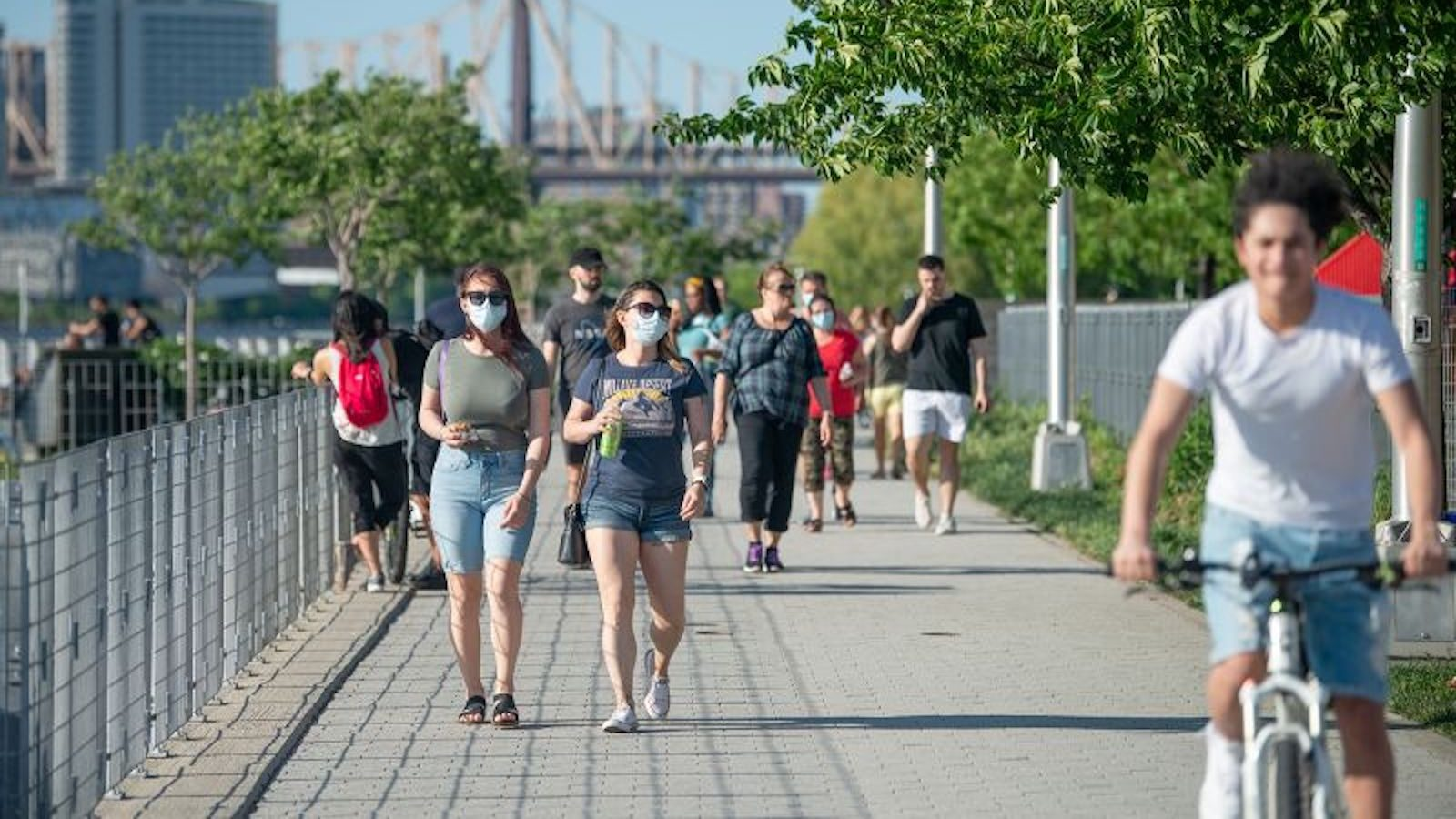By some measures, the number of coronavirus infections is rising, along with test positivity, emergency department visits and, most alarmingly, hospital admissions.
Why might this increase be occurring? How concerned should people be? What preventative measures make the most sense? Who should consider changing plans, including summer travel? And how could all this impact the return to schools, which is already taking place in some parts of the country?
To guide us through these questions and more, I spoke with Dr. Leana Wen, CNN Medical Analyst, ER Physician, and Professor of Health Policy and Management at George Washington University’s Milken Institute School of Public Health. She previously served as Baltimore’s health commissioner.
CNN: Why might there be an increase in coronavirus infections right now?
Dr. Leana Wen: We are now in the fourth summer of the coronavirus pandemic. Every summer so far, the United States has seen a spike in covid-19 cases. Part of this may be due to the cyclical nature of the coronavirus: we’ve seen a spike in cases, followed by a relatively calmer period, followed by another spike. This may well be the pattern in the future, with two or more such waves of infections each year.
One reason for the increase in cases during the summer, specifically, may be that people gather indoors when it’s very hot. This could also explain why there are increases in infections during the holidays, when people gather in larger groups indoors.
It is important to note that this current increase does not appear to be driven by the appearance of a new variant. According to the CDC, all existing variants are offshoots of the omicron strain, which first emerged in late 2021.
CNN: How concerned should people be?
Wen: It depends on the individual and their medical and personal circumstances.
Those who are generally healthy and have had covid-19 or been vaccinated, or both, are unlikely to become seriously ill if they contract the coronavirus. While Covid-19 infections carry the possibility of long-term symptoms, and some people continue to choose to prioritize avoiding infection, many others have decided that, as long as they are well protected from serious illness, they want to resume all pre-infection activities. pandemics. People in this category should know that if infections are increasing, they are more likely to contract the coronavirus, but they probably do not need to change their day to day because avoiding infection is no longer their goal.
Those who should consider taking extra precautions are people who are vulnerable to severe results. That includes older people and patients with underlying medical conditions, such as chronic lung, kidney and heart problems. These people need to make sure they are up to date with their reinforcements.
These people should also talk with their health care providers and find out what to do if they contract the coronavirus. Patients should ask if they are eligible for Paxlovid, the antiviral treatment, and where they can access it. If they are not eligible, what are the alternatives? People who are at especially high risk of infection and those who prioritize avoiding Covid-19 altogether should also consider wearing a high-quality, well-fitting mask (ideally an N95, KN95, or KF94 mask) while indoors crowded
CNN: Could we see a return to mask-wearing for everyone?
Wen: No I dont think so. Top-down requirements like mask mandates should be reserved for true emergencies, which the US is not in right now.
With that said, I want to emphasize the effectiveness of wearing a mask in a unidirectional way, which means that someone who wants to protect themselves can do so by wearing a high-quality mask, even if other people around them are not wearing one. People who are at high risk of severe illness and who otherwise do not want to contract COVID-19 should wear a face covering to reduce their risk of contracting the coronavirus and other respiratory illnesses.
CNN: Who should consider changing summer plans, including travel and large gatherings?
Wen: Again, I think this should be limited to those at high risk of infection, although even people in this category can modify their plans rather than cancel them entirely.
For example, high-risk individuals may wear masks during flights and then choose to dine only outdoors. Gatherings can also be planned primarily outdoors, with high-risk individuals choosing to avoid indoor components.
People who travel should always have a plan for what happens if they contract the coronavirus. Take home tests for covid-19 during the trip. Know where to access treatments. And in case someone needs hospitalization, have a plan for where to go.
CNN: Should those who are considering the covid-19 vaccine booster get it now or wait until the new booster is released in the fall?
Wen: This is a good question. At this point, most people can probably wait until the release of the updated booster, which federal health officials have said is expected in late September or early October. This new boost will focus on the XBB branches of omicron, which are currently the dominant strains.
One group of people who might consider getting the booster sooner are those in the high-risk category who have not yet received their bivalent booster, which launched in the fall of 2022. If they also haven’t had covid-19 in the last year plus or less, their immunity against serious diseases has been greatly diminished. In consultation with their healthcare providers, they should consider getting the current bivalent booster now and then in about five months getting the new XBB-targeted booster.
CNN: How might the rise in cases affect the start of the school year, which is already underway in some parts of the country?
Wen: I don’t think this summer wave should affect the return to schools or the kinds of precautions most students, teachers, and families are taking. While some metrics, including hospitalizations, suggest that cases may be rising, another metric, which is sewage virus levels, suggests that the wave may be leveling off. The current surge is also not as severe as what we saw, for example, during the initial omicron surge.
This summer spike may reflect the cadence of infections going forward, which will see multiple periods each year of higher infection rates. A sensible stance is to safeguard those most at risk while minimizing disruption to the rest of society, including schools.


